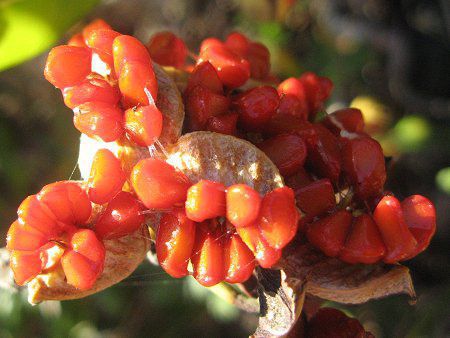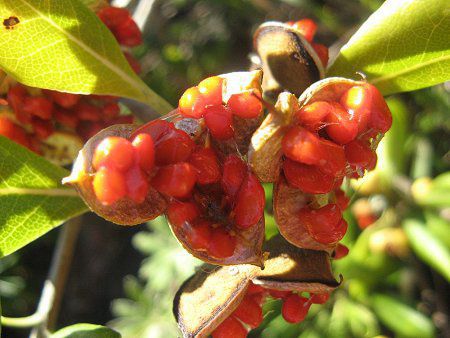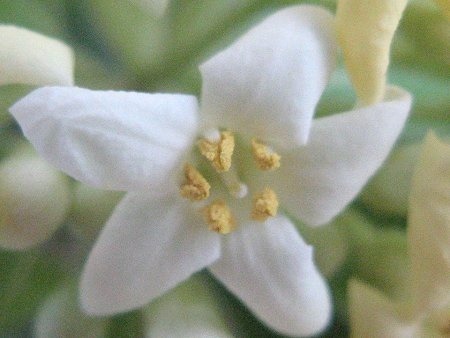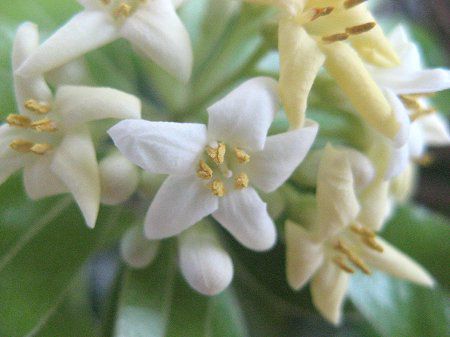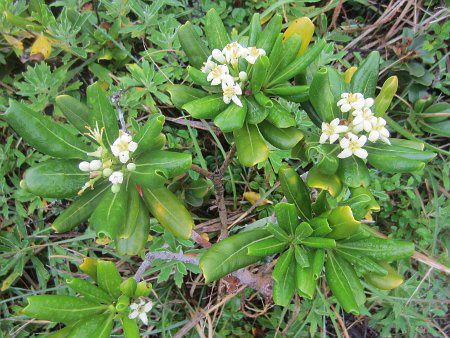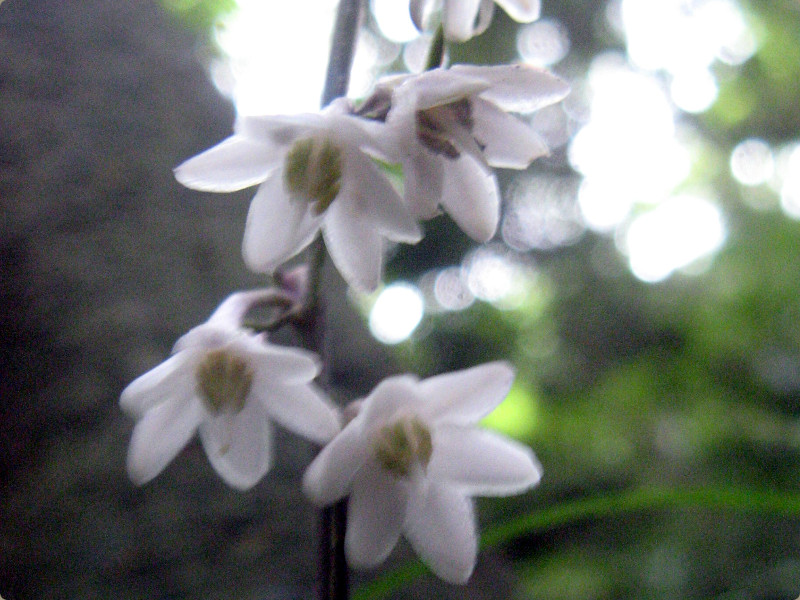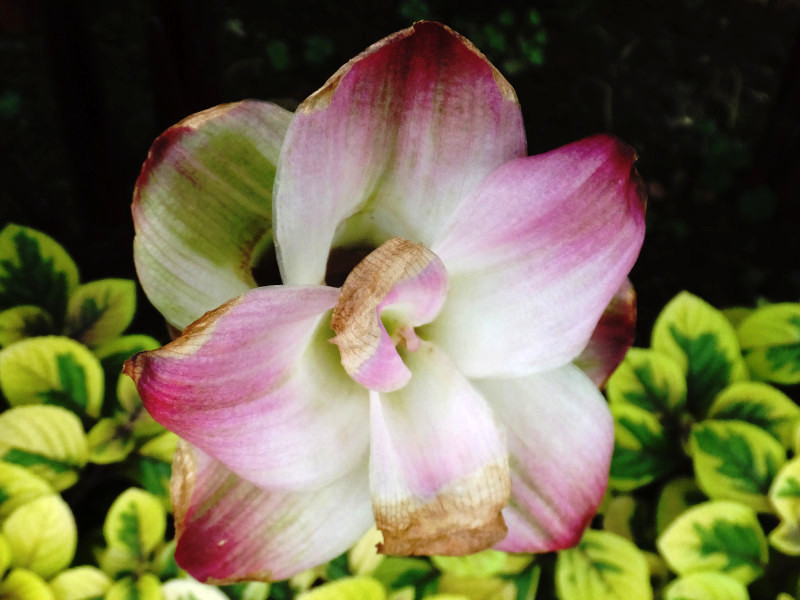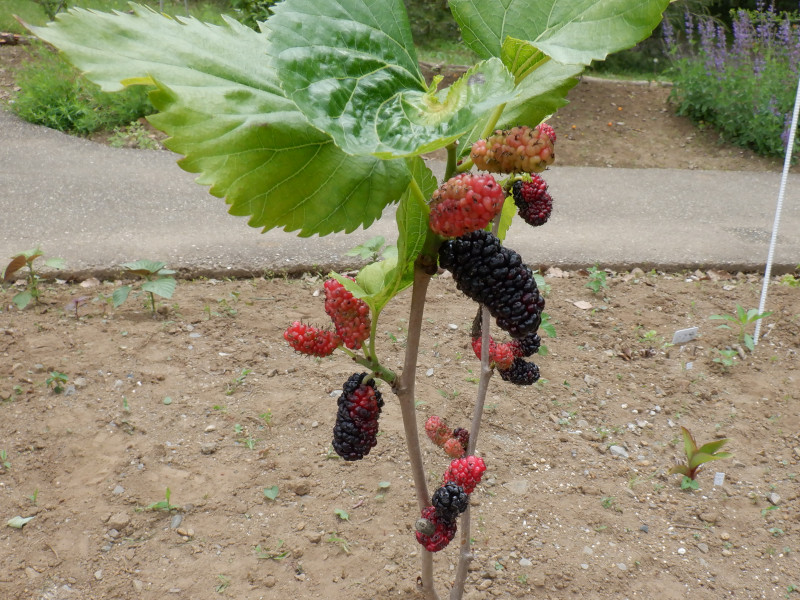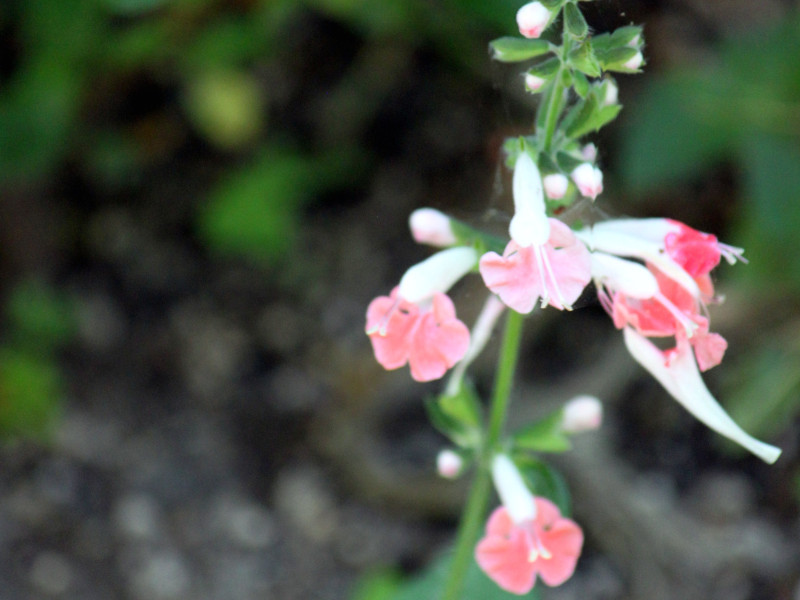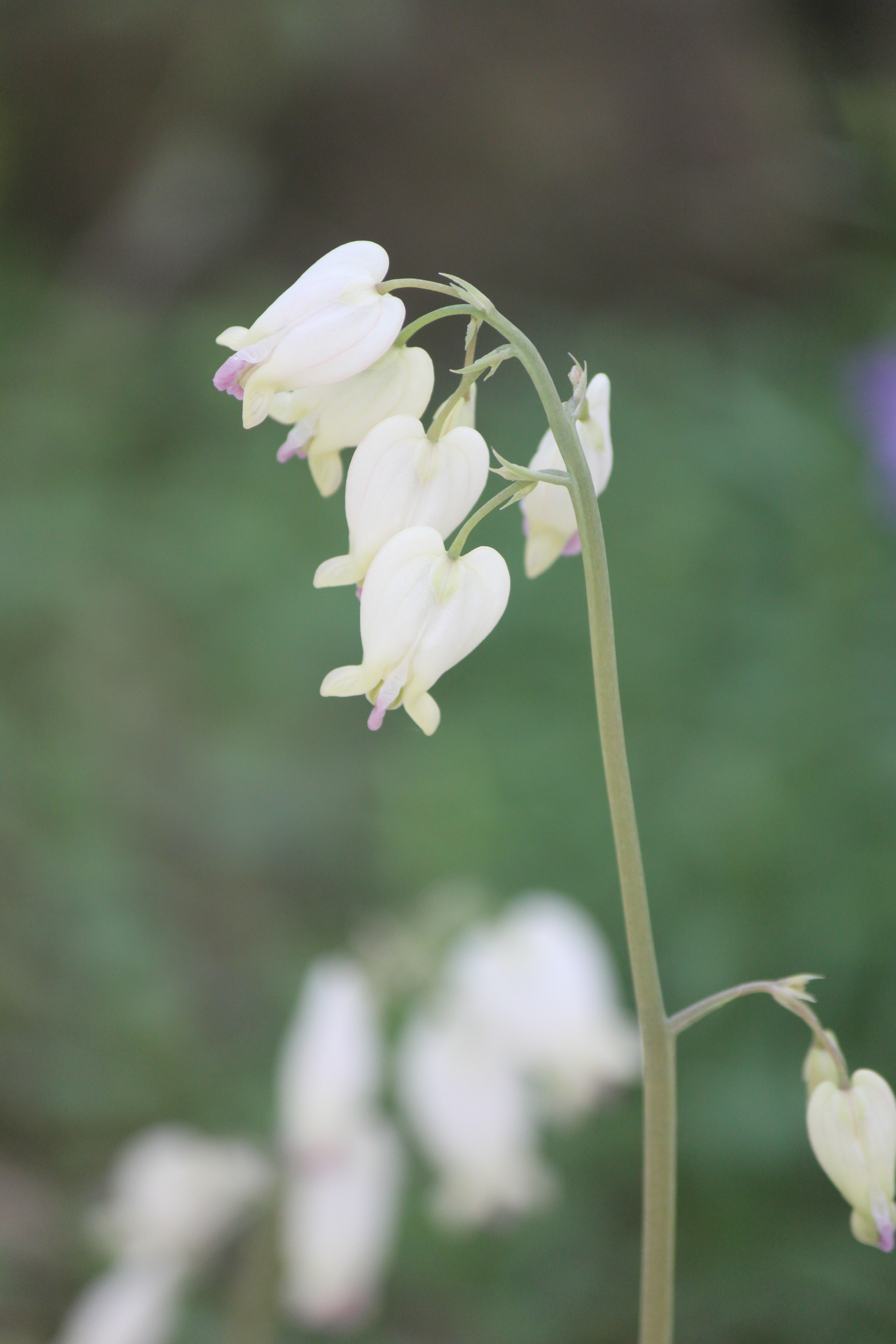Japanese Cheesewood
- Flower nameJapanese Cheesewood
- Scientific namePittosporum tobira
- Aliasトビラノキ, 扉, 扉の木, Japanese Cheesewood
- Place of originJapan, Taiwan, South Korea and China
- Place of floweringFields and footpaths, Garden, Seashore
- Flowering seasonApril, May, June
What is Japanese Cheesewood
Japanese Cheesewood or Tobera (scientific name: Pittosporum tobir) is native to Japan, Taiwan, South Korea and China, and is a drought resistant evergreen shrub of the family Pittosporaceae. From Spring to the rainy season, spread white flowers and bloom small white five flower flowers. Flower color changes from white to pale yellow with the passage of time. It is a dioecious strain. The female has one developed pistil and five degenerated stamens. The male has five developed stamens and one degenerated stamen. The leaves are green, shiny, thick cortex, roundish spatula, no serrated teeth, strong to dry and conform to self-fabric. The leaves are reciprocal, and around the flowers it forms a circle. Towella is a tree that enlarged Sharin Bai of another genus. It grows naturally on the coast, but it can be seen in parks and street trees. From autumn to winter, the fruits are made, 3 tears and red seeds wrapped in mucus are made. Red seeds turn black with maturity. i>Japanese Spindle or Masaki (Masaki, ), But Masaki is oval in leaf shape, has shallow saw teeth, fruits do not sticky.
Generic name: Japanese Cheesewood or Tobera, Scientific name: Pittosporum tobira, Origin: Japan, Taiwan, Korea, China, Habitat distribution: south of Kanto, environment: coast, tree height: 2 to 3 m, leaf shape: spatula, serrated: none, dioecious strain, flowering period: April to June, flower color: white → (over time) Flow yellow, flower diameter: 1 cm, fruit season: November to December, fruit shape: spherical, fruit: 1 to 1.5 cm, seed color: red → black (with passage of time).
